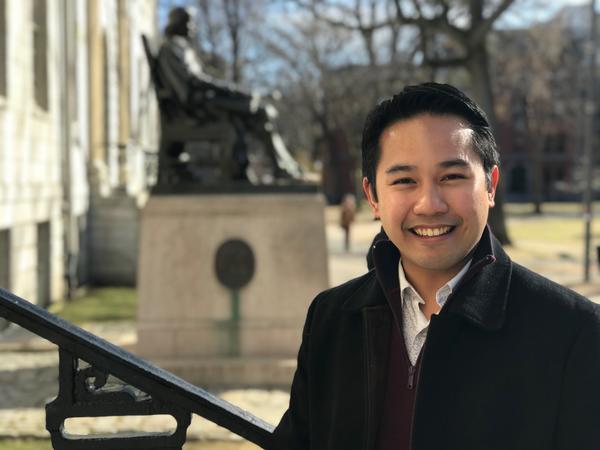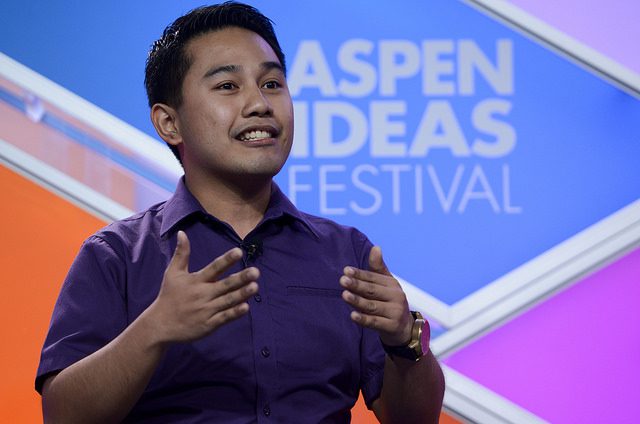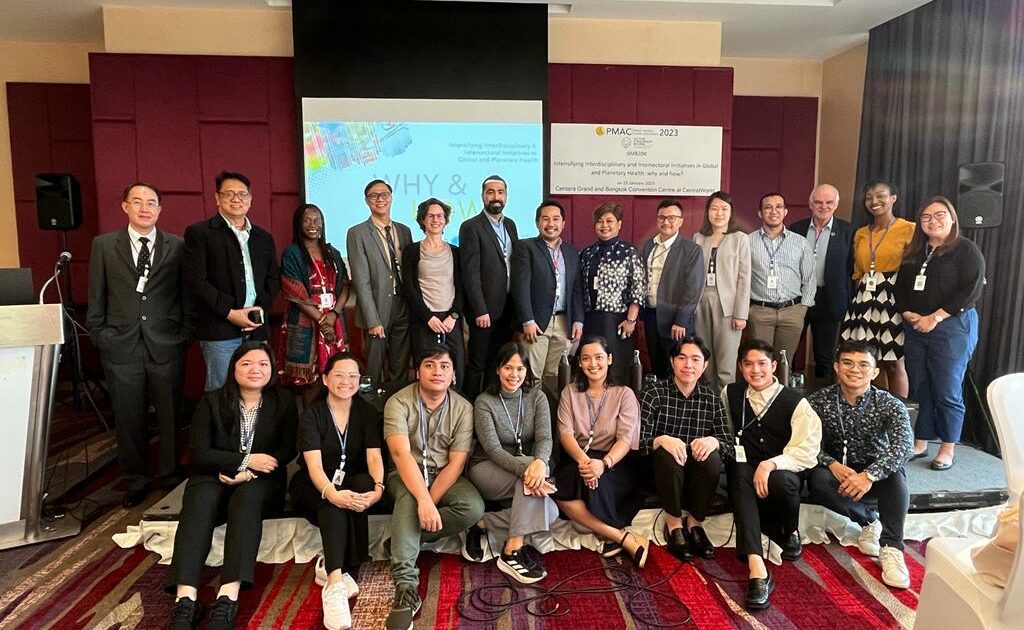
‘Planetary health is the recipe to heal the world’
Peering through the holistic lens of Filipino professor, doctor and activist Renzo Guinto, you start to see how the earth’s health coincides with the health of all living organisms, including humans. The Anthropocene needs a revised compass, according to ‘Mister Planetary Health’ as his students call him. And medical doctors and healthcare professionals need to lead the way. ‘The biggest threat to public health is the man-made climate crisis. It is time for the medical world to recognise this and act accordingly.’
Healthcare professionals are trained to fight disease, treat patients and make people better. But even more critical for public health right now—more than two hundred medical journals collectively wrote in their editorials in the summer of ‘21—is that world leaders are doing more to restore nature and counter the climate crisis. This is because it is the greatest threat to public health. Leading medical journals, including The Lancet, The East-African Medical Journal, and The Chinese Science Bulletin, denounce the failure of world leaders to keep the climate below the 1.5 degrees tipping point as agreed at COP16.
It is unique that renowned medical journals collectively publish a political appeal. According to Filipino Renzo Guinto, the cheerful Professor of Planetary Health, this is a sign of the times. ‘Much more of this kind of joint action is needed,’ he says via a video link that connects Manila and Amsterdam. ‘The medical world must rise above itself and strive for a more sustainable world. That is now our medical priority and responsibility number one.’ Guinto strives for a holistic view of health in which that of our planet is inextricably linked to that of its inhabitants (spiders, sunflowers, microbes included).

To tackle today’s planetary destruction -which is intrinsically linked to self-destructive men – healthcare professionals must perform above and beyond their field, he says. ‘To be a credible force for regeneration and healing, the medical world must set a stellar example. But paradoxically, healthcare has contributed to the health crisis it aims to cure.’
The Dutch healthcare sector is responsible for seven percent of the total CO2 emissions in the country. An average hospital produces about 430,000 kilos of waste per year, most of which ends up in the sewer or is incinerated. That is possible because sustainability is not (yet) a standard quality indicator in healthcare.
In addition, the training of medical scientists and healthcare professionals pays scant attention to the connection between climate and health. But as our vision grows more comprehensive and the picture becomes clearer, the new field of planetary health is gaining popularity. This is why the Royal Netherlands Academy of Arts and Sciences (*KNAW) is busy making an inventory of what scientific knowledge is needed in the field of Planetary Health. Guinto became aware of the urgency of the matter when, while studying medicine in the Philippines, he witnessed first-hand the desperation and disease that are a direct result of climate change.
‘I saw how air pollution, increased heat and disrupted seasons made patients sick. I became more aware of the climate crisis, the failure of governments and the desperation of poor people. At that point I could no longer be that typical doctor who sees patients from behind a desk, occasionally pulls out his stethoscope and writes out a referral note. I realised that if I wanted to address the root causes of these symptoms I had to get out of the hospital. The climate crisis is caused by – and linked to our economy; the way we organise our cities and how our energy and food systems work. Also, our social and cultural values need a major mindshift.’
Guinto ended up in a ‘dizzying mental spiral’ and sought guidance for his spinning head. He desperately needed some kind of guideline to lead him through this all-encompassing web, which he found in the concept of planetary health. ‘It is like a constructive compass that shows me the way and gives me hope. Now I have two patients: men and planet. By planet, I of course mean the web of life. Everything is connected. It’s that simple!’ He grins.

Since then, he has been at the forefront of raising global awareness about the connection between human health and the health of the planet. He prefers to use Google Maps instead of a compass as a metaphor. ‘Planetary health is like Google Maps, I explain to my students. It gives us a clear and wise perspective to see and address the interlocking crises of our time.’
So, which route should medical scientists and healthcare professionals take if they want to propagate and embody the vision of planetary health? Guinto gives four pillars:
∆ Transdisciplinary cross-pollination
‘Scientists like to throw words around like multidisciplinary. But let’s be honest, in reality, we walk around with big blinkers. Professors need to knock on each other’s doors a lot more. Not only in the same building, but also across disciplines and national borders. Getting out of the comfort zone, and embracing various faces and ideas, even if they are not based on Western principles. It is the task of universities and academia to facilitate this. The west, and the Netherlands, have the financial resources for this, which are often lacking in southern countries.’
∆ Intergenerational vision
‘This is not just about your health or mine, it is about the health of our children and those who are not yet born. With every euro of subsidy for oil and gas, with every rainforest that we cut down, we lower their chances of survival. The model of planetary health is an invitation to be responsible ancestors. I want children in 2122 to read history books that say our corona -and climate generation made the right choices. So that they, the children who are yet to be born, inherit a prosperous and healthy world from us.
‘The Sustainable Development Goals state that we must ensure future generations flourish. But unfortunately, those goals have degenerated into a mechanical, technocratic juggling of numbers. Corporations and lobbyists have hijacked the soul of those targets. Now you see that it is business as usual, topped with a green sauce. That certainly is not healthy! As long as our economic model harms our children’s future, it is simply not future-proof. That is why I am a strong proponent of the doughnut economy envisioned by the British economist Kate Raworth.
‘It sweeps aside the deep-rooted idea that economic growth is necessary for progress. Instead, the doughnut is aimed at optimising our well-being within the confines of an ecological ceiling and a social lower limit. If you are within that doughnut as an economy, you live within the limits of what our planet can support. The refreshing thing about this model is that it shows very clearly that this is possible.’
∆ Sense of urgency
‘Policymakers continue to pretend that the world is not on fire, while our current way of life destroys our prosperity and health. People are short-term thinkers. Our governments think in terms of election cycles. Where is that green, new normal that we talked about during the pandemic? We still have nine years to turn the tide. The latest *IPCC report is a powerful weapon in the fight. The story is clear; we have to stabilise the climate or new diseases will exponentially hit us. Doctors worldwide have an exemplary service which has only been exacerbated by the corona pandemic. We are respected. Let’s use that power and privilege to take a leading role in the transformation of a healthier world. This is now medical priority number one.’
∆ The importance of new storytellers
‘Science, statistics and graphs are not enough to wake us up. We need stories that appeal to the heart and soul. First we had Al Gore, now Greta Thunberg. But there is a need for stories that help us understand that we are part of the web of life, rather than above it. Which gives us new insights into our role on earth. According to the United Nations, Indigenous peoples are only two percent of humanity, but they protect eighty percent of our biodiversity. I want to learn from them, but where are those voices? Planetary health is inclusive and harmonious; in that sense, you could call it the decolonised version of global health.

Besides these four pillars of thinking, are there examples of healthy healthcare? Guinto: ‘A climate-neutral and sustainable healthcare system is the aim. But unfortunately, we are not there yet. I do see some bright spots here and there such as the Buddhist Tzu Chi Medical Hospital in Taiwan. They have successfully embraced the concept of sustainable healthcare for ten years now. To fight diseases, you must lead a healthy life, not just take medication. That hospital is earthquake-proof and offers inspiration; there is a piano in the arrivals hall and patients can take yoga classes. All food comes from their gardens and is high-quality, organic and plant-based. They generate clean energy and aim to be completely climate neutral in the coming years.’
He also mentions a study by the University of Leeds—about which country in the world comes closest to the doughnut economy. ‘The surprising answer is Vietnam, which is only three hours away from me! It only violates one of the seven ecological ceilings, namely CO2 emissions. But if the country would close several power plants, that will be solved and they will meet all the requirements of the Paris and Glasgow climate agreements. Of course, you may be thinking, Vietnam—an underdeveloped country with communist roots and a war past—is that our source of inspiration now? Well, if you look at what a doughnut economy means, the answer is yes. It shows that we need to explore health and development, at the individual and planetary level, in a fundamentally different way.’
He also mentions Amsterdam, the first city in the world to adopt ‘the doughnut.’ ‘I hope that Dutch scientists and the growing planetary health community will play an instrumental role in researching and realising an era in which the well-being of people and planet is medical priority number one.’

Leave a Reply